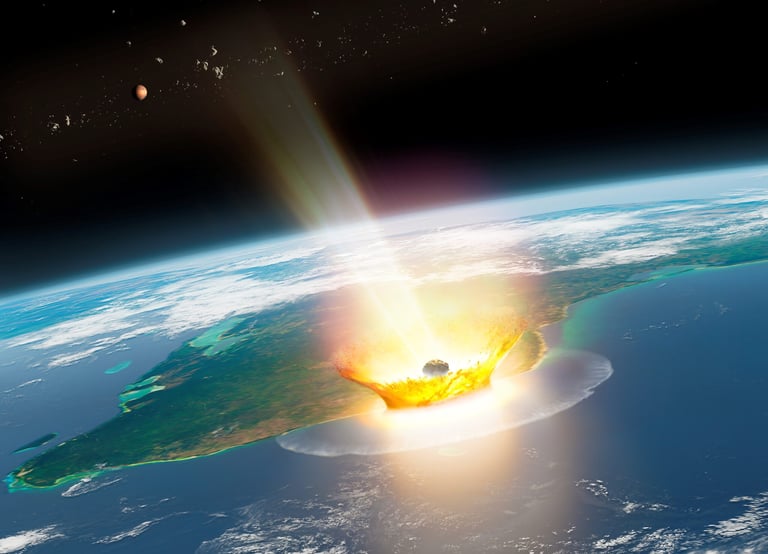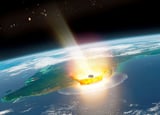Chicxulub Impactor Identified as Rare Carbonaceous Asteroid from Outer Solar System
August 15, 2024
Recent research published in Science provides definitive evidence that the Chicxulub impactor, which caused the mass extinction event 66 million years ago, was a carbonaceous asteroid from beyond Jupiter's orbit.
This analysis confirms that the impactor was a fragile carbonaceous chondrite asteroid, differing significantly from the tougher stony asteroids typically associated with ancient impacts.
Isotopic measurements of ruthenium from debris at the K-Pg boundary layer indicate that this rare element originated from the asteroid, matching the composition of carbonaceous meteorites.
Geochemists gathered samples from the K-Pg boundary and other impact sites, revealing that the Chicxulub impactor was consistent with a C-type asteroid from the outer Solar System.
The impact created the Chicxulub crater beneath the Mexican coast, resulting in a global heat pulse followed by years of winter, which drastically altered Earth's climate.
The Chicxulub asteroid's impact led to the extinction of over 70% of species, including nonavian dinosaurs, and set the stage for mammalian evolution.
The study emphasizes the importance of understanding the origins of such asteroids, as they could pose significant risks to Earth in the future.
Dynamical modeling suggests that Chicxulub-like impacts are expected to occur approximately every 250 to 500 million years, reducing immediate concerns about similar catastrophic events.
Previous hypotheses suggested the impactor might be a comet, but current analyses show it had a composition consistent with carbonaceous chondrites, ruling out cometary origins.
Carbonaceous asteroids, rich in carbon and organic compounds, are rare and believed to have formed in the outer solar system, making the Chicxulub impactor a unique case.
This research not only clarifies the nature of the Chicxulub impactor but also contributes to our understanding of asteroid dynamics and potential future threats.
Summary based on 13 sources
Get a daily email with more Science stories
Sources

The Guardian • Aug 15, 2024
Crater formed from Earth’s extinction produced by carbon-rich ‘C-type’ asteroid, scientists suggest
Nature • Aug 15, 2024
Dinosaur-killing Chicxulub asteroid formed in Solar System’s outer reaches
Yahoo News • Aug 15, 2024
Asteroid that doomed the dinosaurs originated beyond Jupiter
Mashable • Aug 15, 2024
Scientists discover where the huge dinosaur-killing asteroid came from